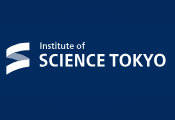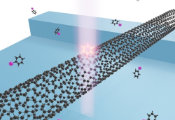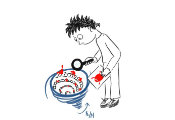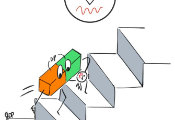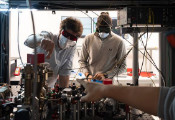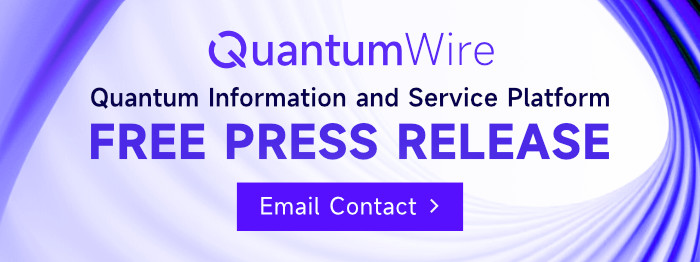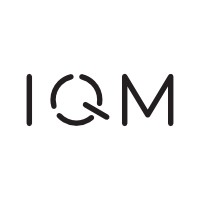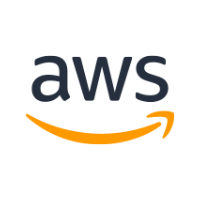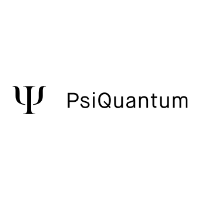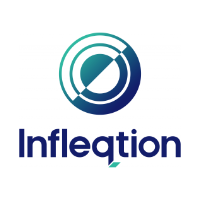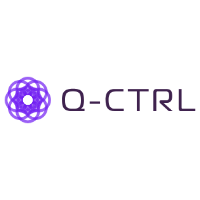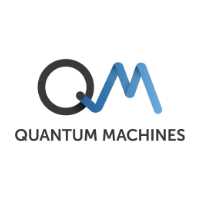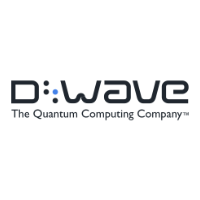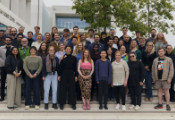Combining Machine Learning With Quantum Metrology: Making a Universal Quantum Sensor
April 14, 2025 -- Atom interferometry, a technique that leverages the wavelike nature of atoms, has been pivotal in precision measurements, including satellite navigation and measuring the Earth's roundness. Traditional atom interferometry setups, however, often lack flexibility, requiring hardware modifications for performing different measurement tasks.
Addressing this limitation, JILA Fellow and University of Colorado Boulder physics professor Murray Holland and his team, along with CU Boulder Engineering Professor Marco Nicotra, developed a platform that combines machine learning with atom interferometry. Recently published in Physical Review Research, their work establishes a programmable framework for quantum sensing, where, using universal programmable atom-optic “gates,” a single device can be reconfigured via software to perform a wide range of precision measurements—such as acceleration, rotation, and gravity gradients—without hardware changes.
This innovation not only advances the flexibility and efficiency of quantum sensors but also lays the groundwork for a new wave of quantum engineering in which future quantum technologies integrate AI-driven control to provide extra precision and functionality.
“Understanding the superposition and interference of particles has been at the heart of quantum for more than a century, but just now we are just beginning to develop the experimental tools to really exploit the ideas and build new future technologies,” Holland says.
Following JILA’s Legacy of Laser Stability
JILA has long been recognized as a global leader in precision measurement, particularly in laser stability and atomic control. Much of this legacy stems from the groundbreaking work of JILA and NIST Fellow Jun Ye, whose pioneering research has redefined the frontiers of ultra-stable lasers and optical atomic clocks.
Building on this tradition, Holland, along with JILA postdoctoral researcher Catie LeDesma and graduate student Kendall Mehling, used ultra-stable lasers as the foundation for their system. These lasers create the optical lattice that traps and manipulates a Bose-Einstein condensate—an ultracold cloud of atoms behaving as a single quantum wave.
To bring the system to life, the team collaborated closely with JILA electronics shop member Terry Brown, who played a critical role in designing and fine-tuning the custom circuitry required to control the lattice’s motion precisely.
“Terry Brown has been a pivotal contributor to our experiment, helping us to understand and build the ultra-low-noise radio-frequency electronics that are core components of our experimental design,” Mehling notes.
Each gate operation—such as splitting, reflecting, or stopping the atom wave-packets—was executed through carefully choreographed shifts in the lattice position. These gates acted like programmable “tiles” that could be arranged sequentially, like LEGO bricks, to build complex atom interferometer circuits. By snapping these elements together in different combinations, the team could effectively program the quantum sensor to perform various measurement tasks—all within the same physical setup.
Adding Machine Learning
What sets this project apart is how the team used machine learning to design the gates or “tiles” in their system. Instead of relying on manually tuned parameters or hard-to-find solutions of mathematical equations, the researchers turned to artificial intelligence to solve the complex problem of finding the precise lattice modulations needed to implement each gate. They used optimization algorithms to train a computer to discover how to dynamically position the optical lattice in just the right way to achieve high-fidelity quantum state transformations. This approach not only streamlined the design process but also uncovered solutions that might be non-intuitive to human inventors.
“Artificial intelligence is a trending theme in the science of today, and our experiment is no exception, where the computers find solutions to our design tasks that would be impossible to envisage without their help,” says LeDesma.
Validating Their Setup
To prove their system worked, the team ran a series of experiments with a Bose-Einstein condensate (BEC) of rubidium atoms trapped in the optical lattice. Using precision imaging, they captured the motion of the atoms in real time as each gate was applied, watching as the atom cloud split, reflected, or froze in place according to the programmed instructions. These visual results were then matched with time-of-flight measurements, where the atoms are released and their wavefunctions allowed to expand, revealing their momentum distribution—an essential tool for verifying the implementation of the state transformations.
The comparison between experimental data and the machine learning simulations showed remarkable agreement. Gates designed purely through computational optimization were realized in the lab with high fidelity, often exceeding 90% accuracy. This confirmed that the AI-designed protocols were viable and could be executed with precision in a real-world quantum system—a significant achievement in quantum control engineering.
Creating Versatile Quantum Sensors
By creating a universal gate platform for atom interferometry, Holland’s team has laid the groundwork for software-defined quantum sensors—devices that can switch functions with a new program rather than a new piece of hardware. What’s more, the fusion of AI and quantum hardware offers a pathway to optimizing these sensors for changing environments. In principle, a future sensor could learn in real time, adjusting its gate sequences on the fly to compensate for noise or to prioritize different measurement axes—opening the door to adaptive, intelligent quantum metrology.
This work is also part of NASA’s Quantum Pathways Institute (QPI), a multi-institutional effort to develop deployable quantum technologies. NASA’s vision includes mobilizing quantum sensors for use in space, where traditional systems may be too rigid or sensitive to operate effectively. The universal gate framework aligns perfectly with this goal—enabling sensors that can be reprogrammed mid-mission to adapt to new objectives or conditions in orbit, on planetary surfaces, or even deep-space missions.
“We think this technology solution that bridges quantum physics and AI will allow us to build new kinds of applications that will bring the fuzzy quantum world out of the lab and into everyday life,” Holland says.
This research was supported by NASA and the National Science Foundation.


